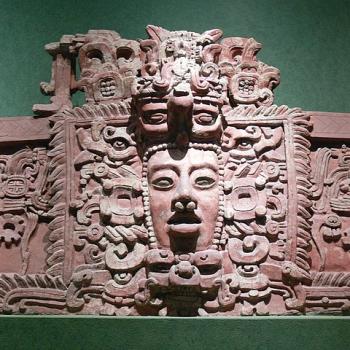
Why Is Isaiah 53 Called the “Forbidden Chapter”?
Isaiah 53:3-7 (KJV): “He is despised and rejected of men; a man of sorrows, and acquainted with grief: and we hid as it were our faces from him; he was despised, and we esteemed him not. Surely he hath borne our griefs, and carried our sorrows: yet we did esteem him stricken, smitten of God, and afflicted. But he was wounded for our transgressions, he was bruised for our iniquities: the chastisement of our peace was upon him; and with his stripes we are healed. All we like sheep have gone astray; we have turned every one to his own way; and the LORD hath laid on him the iniquity of us all. He was oppressed, and he was afflicted, yet he opened not his mouth: he is brought as a lamb to the slaughter, and as a sheep before her shearers is dumb, so he openeth not his mouth.”
Isaiah chapter 53, often dubbed the "Forbidden Chapter," has been a focal point of debate and discussion between Christians and Jews for centuries. But what exactly makes it "forbidden"? This term suggests that the chapter is obscured or avoided, especially given its portrayal of a suffering servant which Christians believe mirrors the story of Jesus Christ's life and sacrifice. While Isaiah chapters 52 and 54 are read in the synagogue, chapter 53 is not part of the annual cycle of readings. For Christians, on the other hand, this chapter is important and commonly employed in discussions of Christ’s divine mission. The chapter represents the distinct interpretation gap between Christians and Jews, making this chapter a vibrant intersection of faith, history, and theology.
What does Isaiah 53 mean to Christians?
Contemporary Christian Perspective:
For practitioners of Christianity, Isaiah 53 is a prophetic tapestry, weaving a narrative that seems to foretell the crucifixion, death, and resurrection of Jesus Christ. The "suffering servant" described feels, to many Christians, like a typological (or symbolic) foreshadowing of Jesus' life. They see the chapter's verses not merely words from the past, but as a divine prophecy of Jesus’s passion–and the New Testament’s primary witness. This connection is so profound that many evangelists have used Isaiah 53 as a bridge to discuss Christ's significance with Jewish audiences.
Early Christian Perspective:
As early as the first century, Christians read this passage from the Jewish canon as a witness of Christ and His divine mission. Indeed, Clement of Rome (AD 35-99)--a man who is said to have been consecrated Bishop by the Apostle Peter, himself–explained Isaiah chapter 53 as a testament to Christ’s humility and His rejection of the “pomp of pride or arrogance” that most men manifest. For Clement, and for most early Christians, this entire chapter was understood to be about the Messiah Who would save through His self-sacrifice. It was, in those early years, understood as a sign of the Messiah’s great humility and redemptive love. From the first century onward, Christians read Isaiah 53 as the story of Jesus, foretelling all that He would give for those who believe.
What does Isaiah 53 mean to Jews?
Ancient Jewish Perspective:
There is some evidence that ancient Jews were more comfortable than modern Jews with Isaiah chapter 53. The discomfort with the passage seems to have developed early in the common era–and was solidified by the second to third centuries C.E. The reason for that developed discomfort was the Christian use of this Jewish canonical book to try to “prove” to Jews that Jesus was the fulfillment of Isaiah’s words and, thus, the Messiah the Jewish people had been waiting for. Many ancient Jews perceived the idea of a Messiah quite literally, and expected a human to fulfill that role. Today, that interpretation is less common–though still present among many (if not most) Haredi (or “ultra Orthodox”) Jews. Thus, the movement away from Isaiah 53 was less about a shift in Jewish interpretations of the passage, and more about the discomfort many Jews had with how early Christians were interpreting the Jewish scriptures to validate Jesus’ life and teachings–and to establish that He was the Messiah who fulfills Jewish Messianic prophecies.
Contemporary Jewish Perspective:
In the panorama of Jewish interpretation, the "suffering servant" of Isaiah chapter 53 takes on a different meaning than in Christianity or even among ancient Judaism. Rather than a singular messianic figure (like Jesus), common Jewish teachings (in the modern era) often interpret the “suffering servant” of Isaiah 53 as a representation of the nation of Israel itself—or a righteous individual within it—enduring hardships for a greater purpose. This interpretation is rooted in a broader understanding of the Hebrew Scriptures, and the historical context in which they were written. It is important to note that Jewish scholars and leaders don't view Isaiah 53 as a "forbidden" text. Instead, they perceive it through a lens that diverges from Christian interpretations, based on their own rich tapestry of tradition and understanding. What, for most Jews, is “forbidden” about this passage is the Christian use and interpretation of it–which very much diverges from how Jews today understand the passage and the role of a messiah.
Conclusion:
Isaiah 53, the "Forbidden Chapter," stands as a testament to the dynamic and multifaceted nature of scriptural interpretation. It showcases how different faiths (and even different denominations within a given faith) can read the same text and derive varied, but deeply held understandings. Whether seen as a prophetic announcement of Jesus' sacrifice, or as a symbol of Israel's enduring spirit, this chapter continues to inspire and challenge believers from all backgrounds. It serves as a reminder of the richness of religious dialogue and the enduring power of ancient texts in modern discourse and lived religion.
10/24/2023 10:00:43 PM











